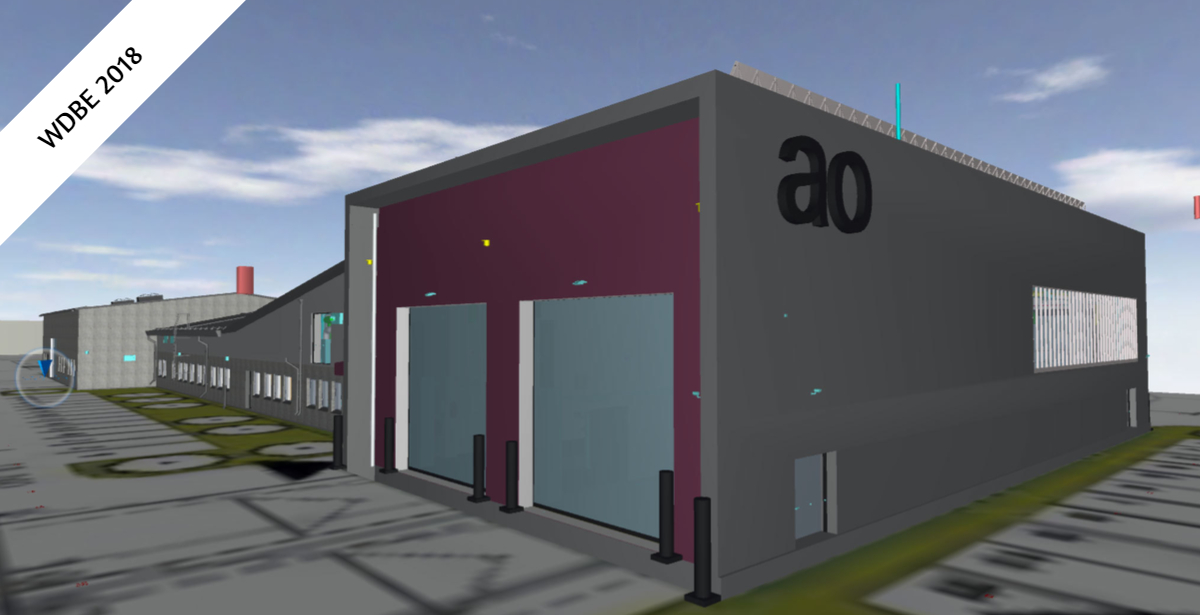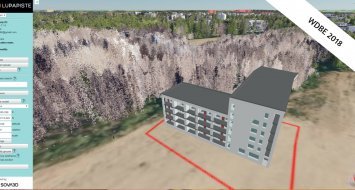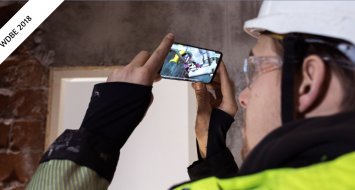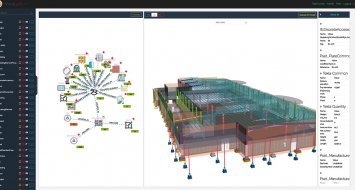
How BIM Can Serve Building Owners
ke elok. 29 15:24:00 2018
Building Information Models typically end their active life after the construction phase. An experimental project was initiated to find out whether and how they can serve owners throughout the life cycle of a building.
Gradia, the Jyväskylä Educational Consortium, provides education to students of all ages in central Finland. It has around 25,000 students, a staff of 1,100, and buildings with a total floor area of 150,000 square meters. Gradia and a team from Gravicon and XRM Finland carried out a government-supported KIRA-digi experimentation project in 2017 on the use of BIMs for building maintenance and repairs.
The project created process descriptions, an exemplary maintenance user interface, and use cases of practical implementations. It also specified maintenance information needs and tested model data exchange using the specifications.
The Owner as Pioneer
Gradia is a pioneer in owner-driven BIM. They have been using building information modeling for over 10 years. It has updated its existing models systematically and created new inventory models of renovation design.
“For many years, we’ve encouraged contractors to start using BIM. We’ve given them software for the construction site and offered help from architects,” says Riikka Kaarnamo, Director of Gradia Properties. “Some contractors have played ball, some haven’t.”
Kaarnamo states that Gradia always “builds as designed.” Even on small annual repair projects, designers use BIM and hand the models over to contractors. Gradia has general agreements with architects and engineers for keeping the BIMs updated. Reliable as-built information improves the productivity of every party to a project and thus saves the owner money.
“The KIRA-digi project was a natural continuation of what we’ve been doing. It extends BIMs to building maintenance,” says Kaarnamo. “We’ve been looking for BIM-capable maintenance software, but haven’t found any on the market. For us, the project served as an opportunity to explore needs and specify information requirements to software vendors and consultants.”
An Experiment in Operations and Maintenance
Gradia partnered with an expert team lead by Jarmo Laitinen, Professor Emeritus and Senior Advisor at Gravicon. The other members, Jenni Kaukonen and Toni Teittinen are BIM specialists at the same company. XRM Finland joined in as a software developer.
“Jarmo and I talked with Gradia as early as 2011 about the lack of support for BIM in maintenance and use. It’s only recently that we’ve seen new, legacy-free software developers emerging,” says Teittinen. “During the KIRA-digi project, we were able to come up with a proof-of-concept with Gradia.”
Teittinen points out that BIMs are especially valuable to fast-changing properties. Having the right information at hand at any moment shortens maintenance lead times and saves costs. It also helps the owner manage assets and spaces.
Piloting with Real-Life Data
The project used a Gradia building in Lievestuore as a pilot. The team started out by researching the data from the pilot’s architectural, HVAC, and electrical BIMs.
“After the initial analysis, we workshopped with designers and Gradia the information that their personnel would need for operations and maintenance. There was an excess of data in some areas and missing data in other areas, e.g. in electrical design,” Kaukonen explains. “We found out that a window object can have over 2,000 properties in an IFC model. It’s essential to understand which properties are really needed.”
The team came up with process models that describe how building information should flow during a property’s life cycle. An important consideration was the so-called “digital twin” of a property. What it is, who owns it, and how design BIMs are integrated into it were questions that the project also tried to answer.
The project created a demo interface for maintenance requests using the pilot’s BIMs and XRM Finland’s Premis software. The architect’s model was made with Archicad, which Premis could read natively. It could create visualizations of the BIMs with BIMx, an Archicad extension. The HVAC and electrical models were transferred from MagiCAD in open IFC exchange format, but doing so required additional manual work.
The project was able to use existing Finnish YTV (Common BIM Requirements) as a starting point. It became evident that especially in mechanical design, the IFC format needs further development if the files are to be machine-readable.
Reliability is the Key to Success
Design and construction create a huge amount of data. If the property information is not updated meticulously, the users cannot trust any of it and won’t use it. On the other hand, if it is relevant and correct it is a big time-saver.
“A maintenance person told me that instead of driving to a property 30 kilometers away just to check the type of a replacement lamp used, he’d be happy if he could look up the information on the BIM,” Kaukonen relates. “That, of course, requires confidence in the data.”
Technology is not the Highest Hurdle
Riikka Kaarnamo says that the KIRA-digi experiment showed that life cycle BIM is doable. The technology is not the highest hurdle; rather, it is getting the buy-in from owners, consultants, and software developers. Kaarnamo is adamant about the benefits that life cycle BIM can bring: “It takes time and money to have BIMs made during construction projects. Why wouldn’t we keep them alive and make better use of them?”
Professor Laitinen agrees. He sees operations and maintenance as the “real business” of BIM that developers have been overlooking for too long.
“I would say that what we’ve done in this project is quite special. Especially allowing the information to flow from design to maintenance and then back to design is unique,” says Laitinen. “We’re happy to share our results with others.”
Learn More at WDBE 2018
If you want to contact Riikka Kaarnamo, email her at riikka.kaarnamo(at)gradia.fi. You can reach Jenni Kaukonen at jenni.kaukonen(at)gravicon.fi.
The project team will give a presentation at the World Summit on Digital Built Environment WDBE 2018 in September in Helsinki. Sign up to see it plus 100 other presentations and 10 keynotes from all over the world.

How BIM is Revolutionizing Building Control in Finland
KIRA-digi experimentation project has demonstrated that BIM can improve the building permi...

BIM Meets Reality on the Construction Site
Using augmented reality the 3D model and the physical room are brought together on the mob...


